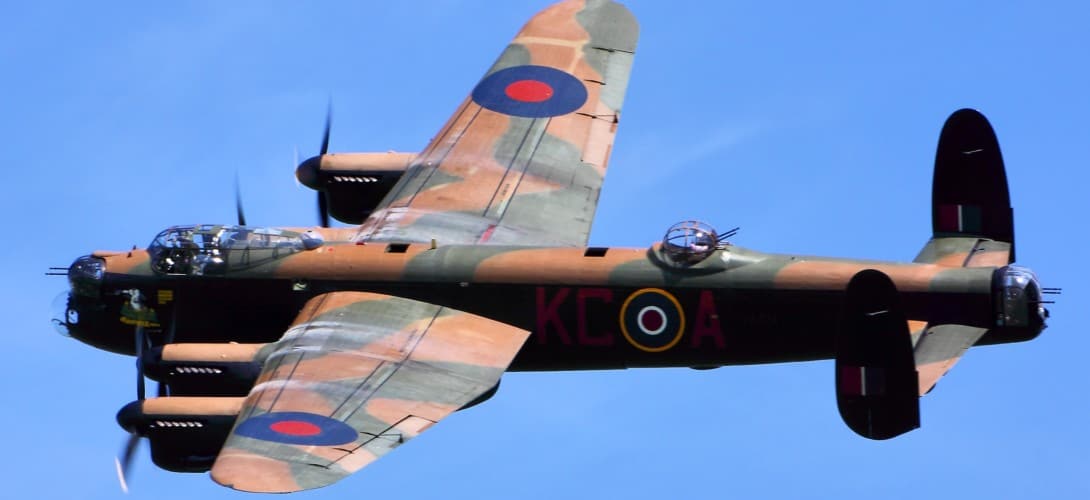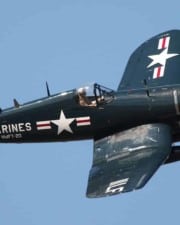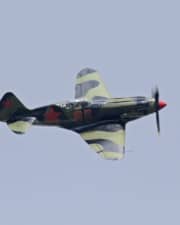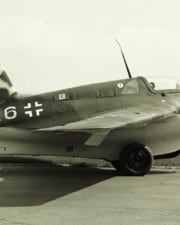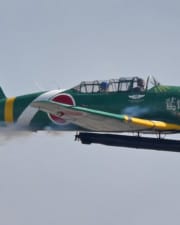For people interested in World War II or military bombers, there is no shortage of interesting tidbits of information available. People from all different countries are interested in the British bombers of World War II, particularly since they played such an important role in winning that war.
During World War II, Allied forces united to stop Hitler in his tracks and his thirst for world domination. By 1945, the British had more than 1,500 aircraft and 108 different squadrons. These include everything from light to heavy bombers, each of which had a very important role during the war.
Some of the planes look small today, but they did their job while they were in the sky. They were very reliable planes that were structurally sound and built to last, and they were divided into the various types of bombers, including light, medium, and heavy bombers, in addition to others.
British Dive/Torpedo Bombers
1. Blackburn B-24 Skua
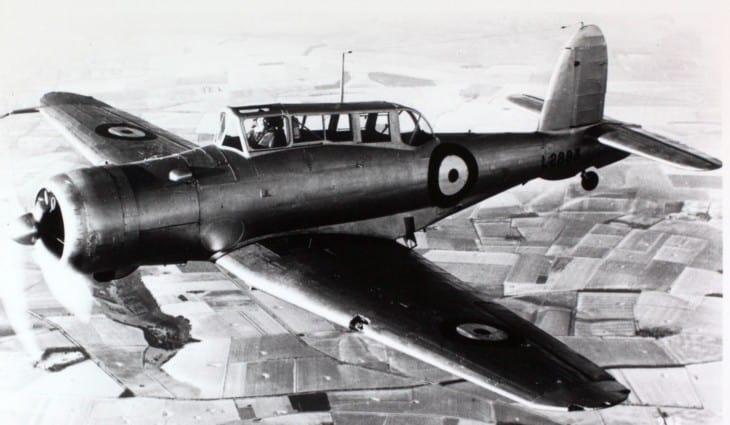
First manufactured in 1938, this was a twin-seater single-engine plane that was designated as both a fighter and a dive bomber, but it was far more successful as the latter. In its time, the plane had a lot of features considered to be very modern and new.
The B-24 Skua only had two variants, and it had machine guns in the wings of the plane and one more in the rear.
2. Brewster SB2A Buccaneer (Scout Bomber)
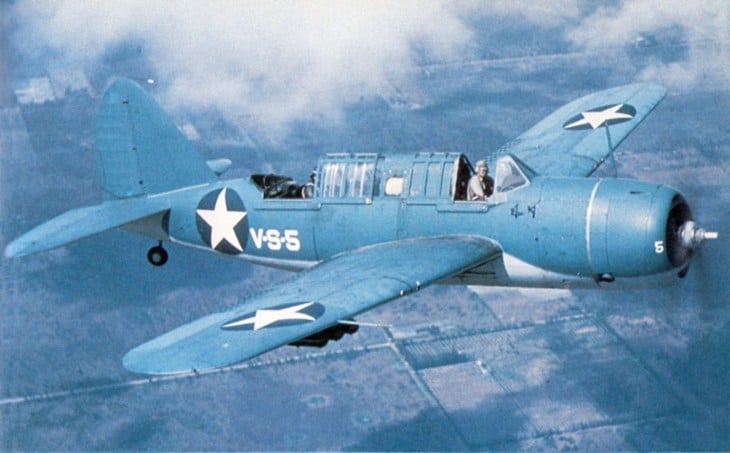
This twin-seater plane was introduced in 1941, just months before the attack on Pearl Harbor that thrust the United States into the war. All total, 771 models were manufactured, and the 1700HP radial engine allowed it to fly at 275 MPH.
Unfortunately, the planes are not in existence today. Only two airframes now exist, and they can be found at the air and space museums in Arizona and Florida.
3. Hawker Typhoon (Fighter Bomber)

First manufactured in 1941, the Hawker Typhoon was originally designed to be a medium- to high-altitude interceptor, but problems with the plane resulted in it becoming a low-altitude interceptor instead. It was later equipped with bombs and rockets.
The Hawker Typhoon was a single-seat plane that eventually became a nighttime intruder and a long-range fighter during World War II.
4. Fairey Barracuda
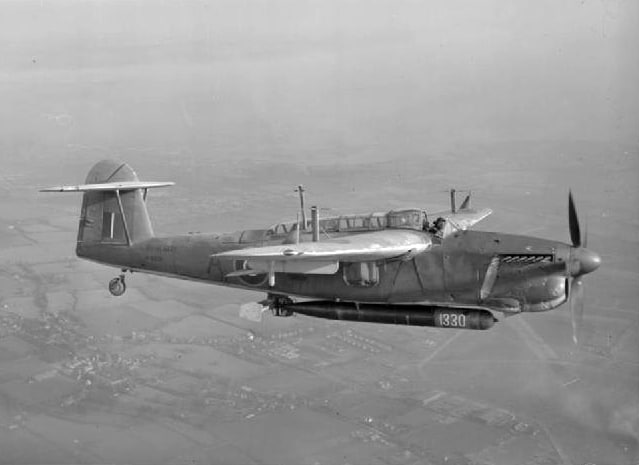
The Fairey Barracuda was a three-seater single-engine plane whose purposes included dive bomber, anti-submarine warfare (special missions), and ground attacks. There were a total of 2,609 units made of this airplane, but none of them are in service today.
The plane was first manufactured in 1943 and was responsible for transporting many of the Fleet Air Arm squadrons’ inventory during World War II.
5. Fairey Albacore
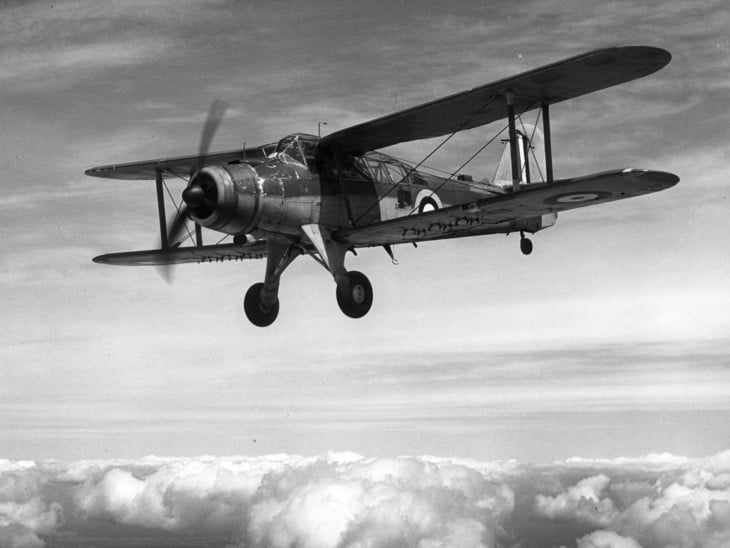
The Albacore, known as the Applecore to its crew, first went into service in 1940 and was a biplane with three seats and a Bristol Taurus engine. A total of 798 of them were manufactured before the plane was retired.
The Albacore could reach 6,000 feet in roughly eight minutes, which was quite a feat at that time. It flew at a maximum speed of around 160 MPH.
6. Fairey Swordfish

The Fairey Swordfish first came on the scene in 1936 and had an old-fashioned World War I look. Despite that, it played an important part in winning World War II. It was a three-seater biplane that was tasked with duties such as torpedo bomber, anti-submarine, and reconnaissance.
This was a very large plane with an open-air cockpit. It was also used in training missions, and there were a total of 2,396 units made before it was retired. Seven different variants of the plane were eventually manufactured.
7. Grumman TBF Avenger
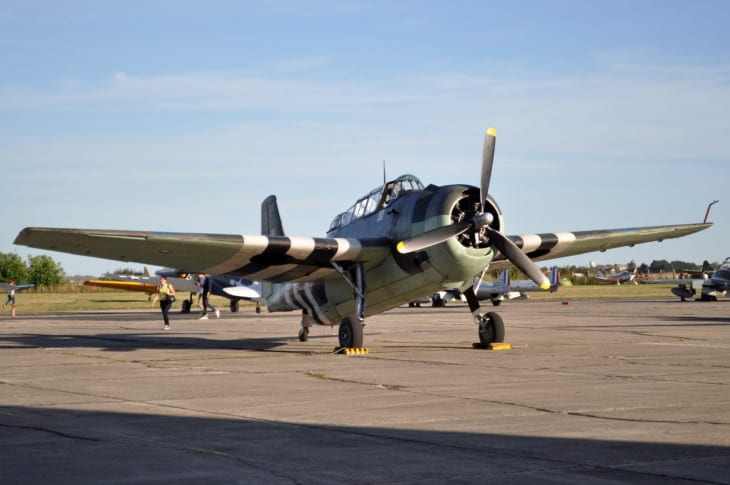
This three-seater plane was not the most attractive plane ever made, but it had important roles during World War II. These included airborne early warning (AEW), electronic warfare, ground attacks, and air-to-air combat, among others.
It was also a torpedo bomber that saw nearly 10,000 planes manufactured before it was retired. It had been around since 1942.
8. Vickers Vildebeest

This airplane was first flown in 1928 and was purchased by the Royal Air Force (RAF) in 1931. It is a biplane design with a 600 HP engine, and when World War II started, there were still 101 of them in use.
The plane was a three-seater and was used mostly as a torpedo bomber. It replaced a plane known as the Hawker Horsley, and you can see an example of its airframe at a museum in New Zealand.
9. Vought SB2U Vindicato
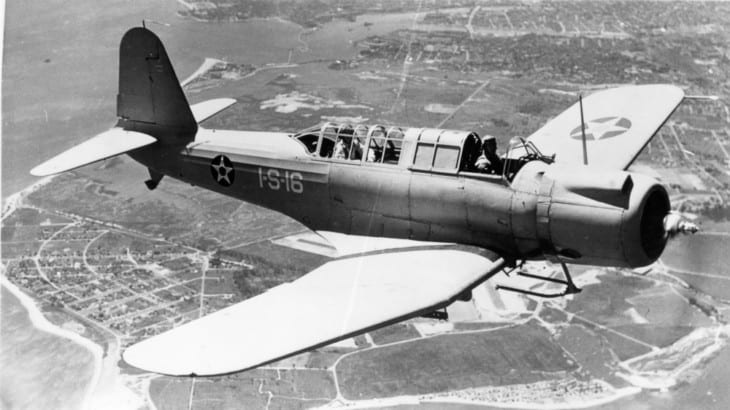
First manufactured in the United States in 1937, this two-seater monoplane was used by three different navies: the United States, France, and Great Britain. A total of 260 units were produced, although they are now retired. Some of the duties it was involved in include ground attacks, maritime, and special missions.
Nevertheless, the Vindicato eventually was used only for training purposes up to 1943, so this was its main function for most of its existence.
11. Vultee A-31 Vengeance
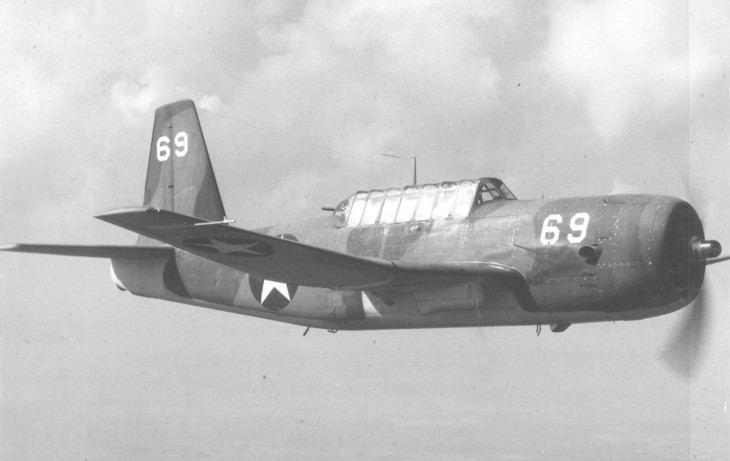
Although the modified version of the Vengeance, the A-35, is more well-known, the A-31 Vengeance was used by the military in Great Britain, India, and Australia during World War II. In Great Britain, there were a total of five variants, and the plane was officially retired in 1945.
The A-31 Vengeance was a two-seater that could fly at 11,000 feet and a max of 275 MPH. While it is retired, you can see components of the plane, as well as a complete A-31 plane, in Australia today.
British Heavy Bombers
12. Avro Lancaster

The Lancaster, according to most World War II experts, was the most-significant and important plane flown by the RAF during that war. It was a four-engine plane that accommodated a crew of seven and which was used for intelligence, surveillance, and reconnaissance (ISR), ground attacks, and numerous other duties.
At one point during the war, the Lancaster could accommodate a total of 14,000 lbs. of conventional drop bombs, making it a very valuable plane. A total of 7,377 units were manufactured before it was finally retired.
13. Boeing B-17 Flying Fortress
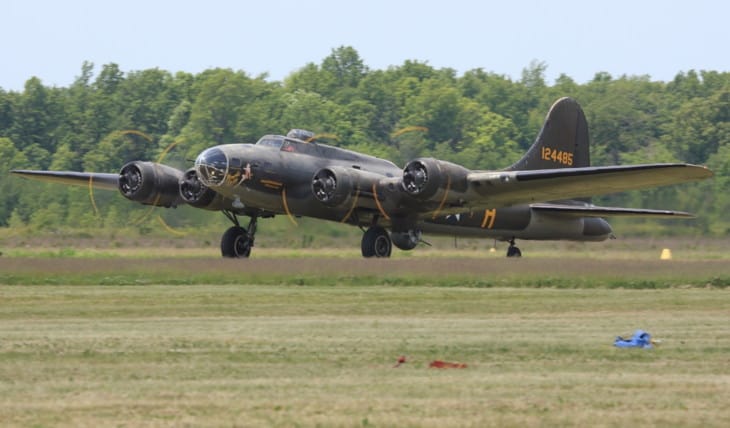
This four-engine heavy bomber dropped an amazing number of ordnances during World War II – more than 640,000 tons of it, in fact. Almost 13,000 units were produced before it was retired, and it accommodated a total of 10 crew members.
When the Allied forces were dropping daytime bombs over Europe on the way to Berlin, the Boeing B-17 Flying Fortress was the main plane they used to do so.
14. Handley Page Halifax

Established in 1941, the Halifax heavy bomber was mostly responsible for nighttime bombing, a non-glamourous but very important part of the war effort. It accommodated a crew of seven people and could fly up to 400 feet per minute.
This plane was responsible for a total of 227,610 tons of bombs and flew at a rate of 312 MPH. It was used by the military in countries such as the United Kingdom, Australia, Poland, Canada, and many others.
15. Short Stirling

This four-engine plane has been around since 1941 and accommodated a seven-member crew. A total of 2,383 units were delivered but by the end of the war, its design was rendered obsolete and it was retired. Each of the engines was 1,640 HP engines, and the plane could fly at 270 MPH.
The Stirling plane was flown mostly for ground attacks by places such as Great Britain, Egypt, and Belgium. It had a ceiling of 16,995 feet.
British Medium Bombers
16. Armstrong Whitworth Whitley
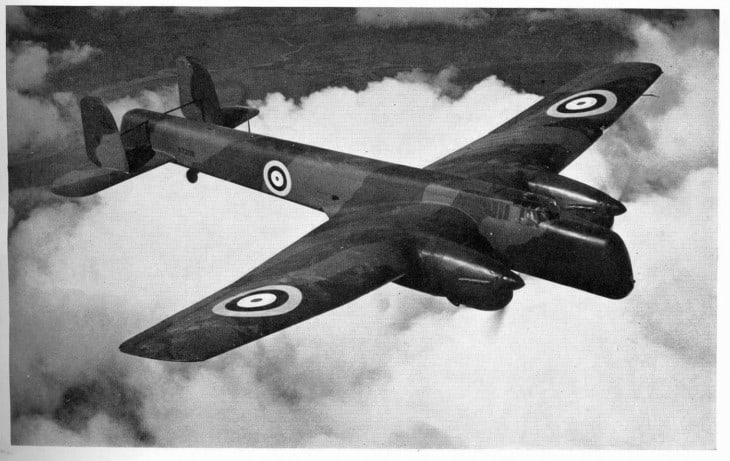
This two-engine plane has been around since 1937 and was used mostly for ground attacks. It was called an “ugly yet robust” plane and accommodated a crew of five people. It flew at a speed of 230 MPH and had a ceiling of 26,001 feet.
There were a total of seven variants of this plane, and it had a unique angled-down nose and cockpit, which some people said was supposed to look like a chin. It continued to produce 1,656 units until it was retired in 1943.
17. Avro Manchester
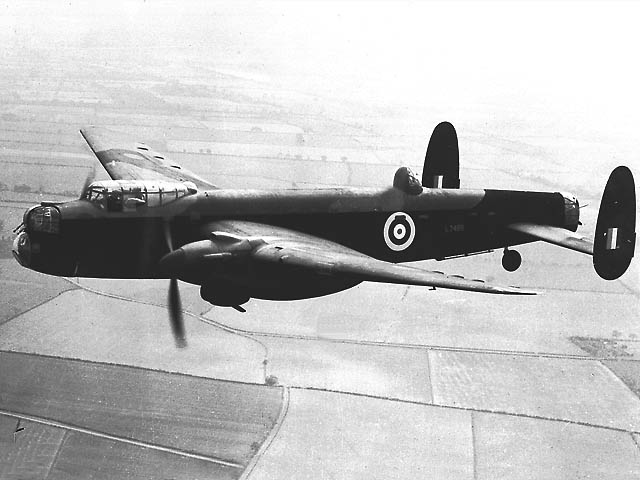
The Manchester came into existence in 1940 and was a two-engine plane used primarily for ground attacks. It accommodated a crew of seven people and was used by the military in the United Kingdom and Canada.
There were five variants of this plane before production ended, and only 209 units were ever made. This is mostly because the process was rife with various problems. It also accommodated a total of eight machine guns on each plane.
18. Bristol Beaufort (torpedo bomber)
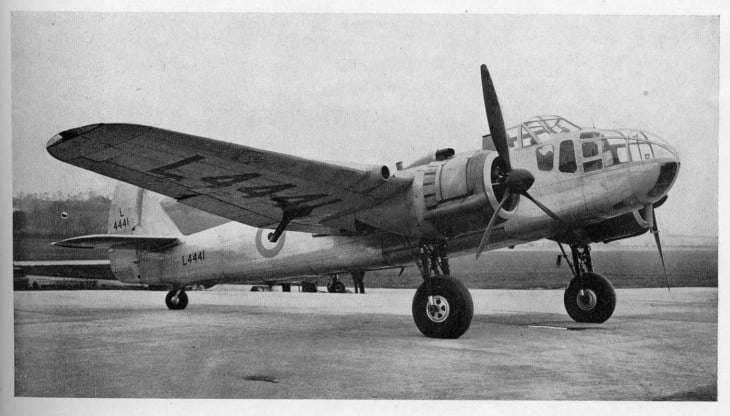
Around since 1940, the Beauford was the main torpedo bomber in Great Britain from 1940 to 1943, when it was replaced by the Beaufighter. It accommodated a crew of four and held a whopping 2,000 lbs. of traditional drop bombs.
Nearly 2,100 units of the Beaufort were manufactured before it was retired, and the plane was used by the United Kingdom, Australia, Canada, New Zealand, and a few other places.
19. Douglas A-20 Havoc

With more than 7,000 units made of this plane, it was used extensively during World War II as a night fighter and medium bomber. It was also used by Great Britain, the United States, and the Soviet Union.
The Havoc was eventually replaced by the Douglas A-26 Invader, and there were several dozen variants of the plane. It accommodated a crew of three and could fly at a speed of nearly 340 MPH. It could also climb 1,500 feet per minute.
20. Handley Page Hampden

The Hampden was a medium bomber and nighttime bomber with a single-seat cockpit and room for a crew of four people. It could fly at a speed of 255 MPH and climb 980 feet per minute, and its main duties were intelligence, surveillance, and reconnaissance (ISR), ground attacks, and special missions.
The plane had a slim fuselage and was flown by the military in places such as the United Kingdom, Australia, Canada, New Zealand, and Sweden, among others.
21. Lockheed Ventura
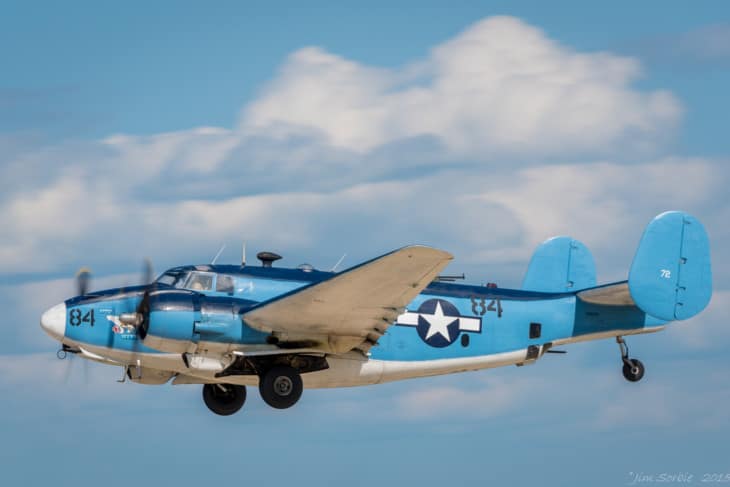
The Lockheed Ventura first came on the scene in 1942 and was used for patrol as well as bombing by both the United Kingdom and the United States. More than 3,000 units total were produced, and the plane accommodated a crew of six people.
Some of its main duties included special missions, commercial aviation, ground attacks, and training. It could fly at a speed of 322 MPH and could climb at 2,035 feet per minute.
22. Martin B-26 Marauder
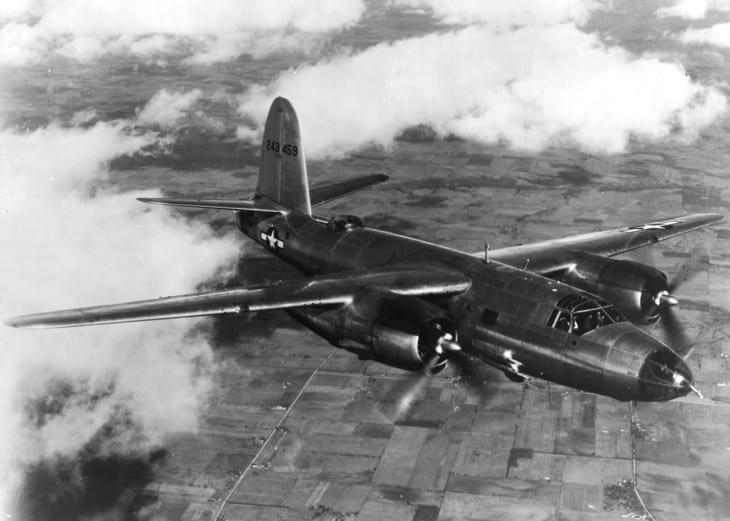
This twin-engine plane has been around since 1941 and had a tough start, but that didn’t stop it from being one of the most significant bombers used during World War II. Its main duties were training, especially for student pilots, and ground attacks.
The B-26 Marauder accommodated a crew of seven people and flew at a speed of 282 MPH. It could also climb an impressive 1,250 feet per minute. Nearly 5,300 units of the plane were eventually produced.
23. North American B-25 Mitchell

This is a 1941 twin-engine plane that accommodated a crew of five people and flew at 272 MPH. More than 9,800 units of the plane were manufactured, and some of its many duties included ground attacks, transportation, training, VIP services, maritime, and numerous special missions, as well as others.
With a climbing speed of 1,666 feet per minute and numerous capabilities during war time, it’s little wonder that this was such a valuable plane during World War II.
24. Vickers Wellington
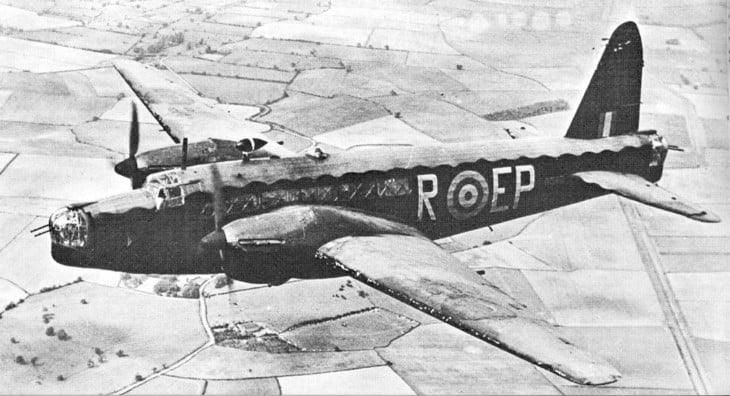
Accommodating a crew of five to six people, this plane really shone as a nighttime bomber and was used until 1943, when it took a second-line role. Its duties consisted of ground attacks, and it was used by numerous countries, including Greece, Australia, New Zealand, the United Kingdom, Poland, and many others.
The Wellington also flew at 255 MPH and climbed 930 feet per minute. It accommodated numerous machine guns and more than 11,000 units of the plane were manufactured before it was retired.
British Light Bombers
25. Bristol Blenheim
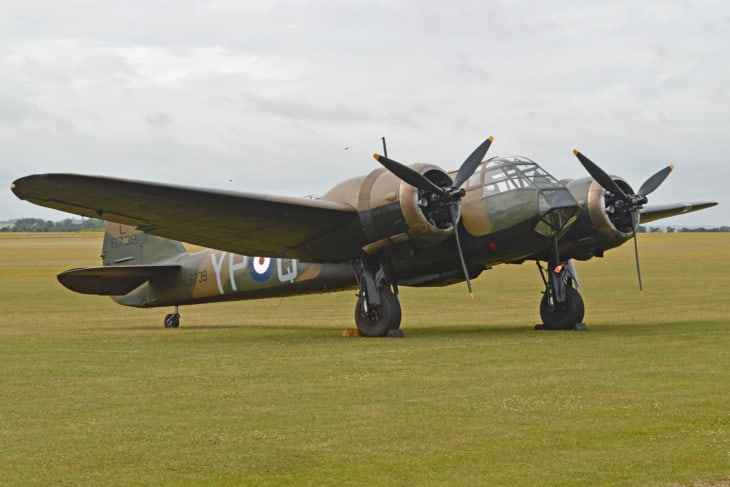
This light bomber was also a heavy fighter and a nighttime fighter, and its main duties included reconnaissance, interceptions, air-to-air combat, ground attacks, and several special missions. It accommodated a crew of three people and flew at 267 MPH.
The Blenheim was especially important during the early part of the war because it was a bit advanced for its time. More than 4,400 units were manufactured before it was retired.
26. de Havilland Mosquito (multirole combat)
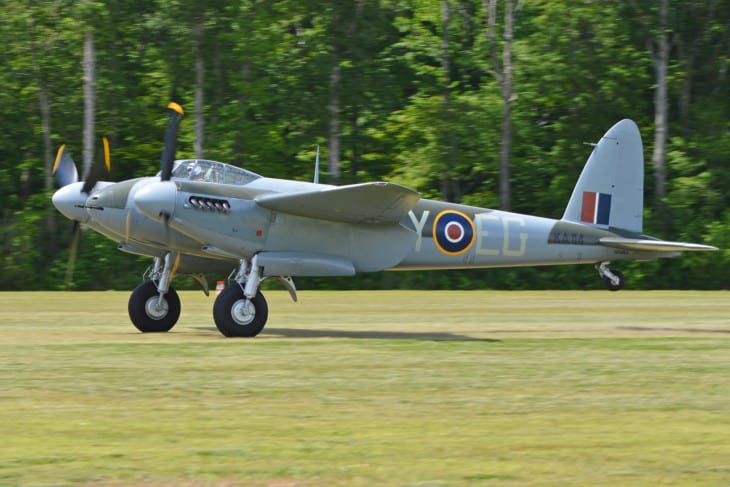
Some of the many roles this plane had during World War II include intruder, patrol, interceptor, anti-ship platform, nighttime fighter, and several others. It accommodated a crew of two people and flew at an impressive 407 MPH.
More than 7,700 units of this plane were manufactured before it was retired, and it could climb 2,850 feet per minute.
27. Fairey Battle
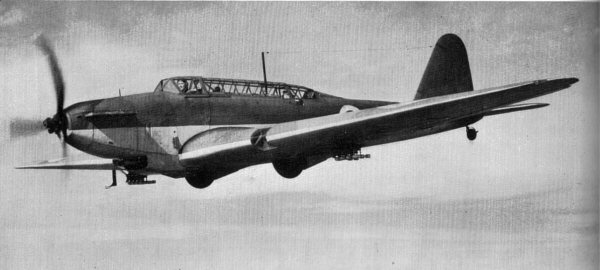
This plane has been around since 1937, but the single-engine, three-seater plane was no match for the more nimble fighter planes that the Germans unleashed during World War II. Still, nearly 2,200 units were eventually produced before it was retired.
It flew at 257 MPH and climbed at 1,250 feet per minute. Some of its duties included close air support (CAS), ground attacks, and training, to name a few.
28. Hawker Hart

There were numerous variations of the Hawker Hart light bomber, and it actually saw more action before World War II than it did during the war. In fact, this two-seater plane played only minor roles during this war, even though it was used by Canada, South Africa, the United Kingdom, and several others.
29. Hawker Hind
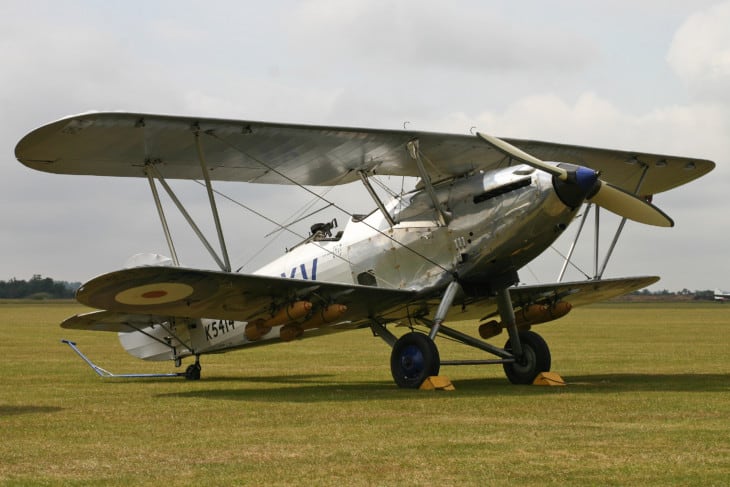
The Hawker Hind was a variation of the Hawker Hart, and like the Hart, it played only a limited role in the Second World War. It was used by Canada, Yugoslavia, Sweden, and several others.
30. Lockheed Hudson
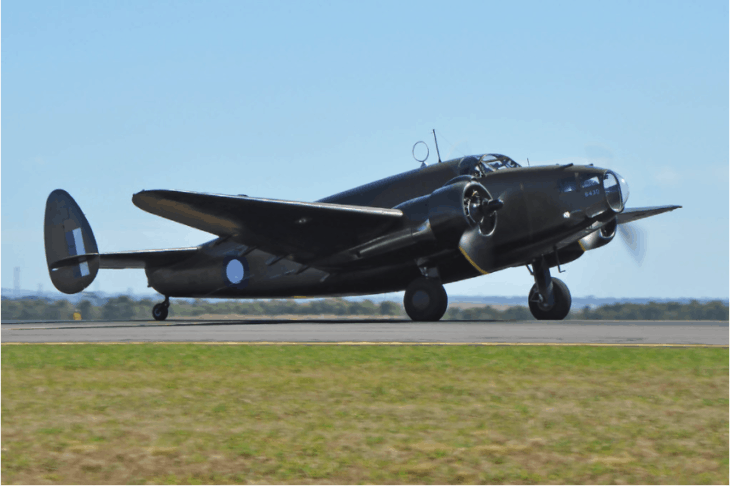
The Lockheed Hudson was produced from 1938 to 1943, and many of them saw action during World War II. The single-engine six-seater plane was mostly involved in ground attacks, commercial aviation, transportation, and training.
Nearly 3,000 units were manufactured before the plane was retired, and it boasted a speed of 249 MPH and a climb rate of 1,200 feet per minute.
31. Martin Baltimore
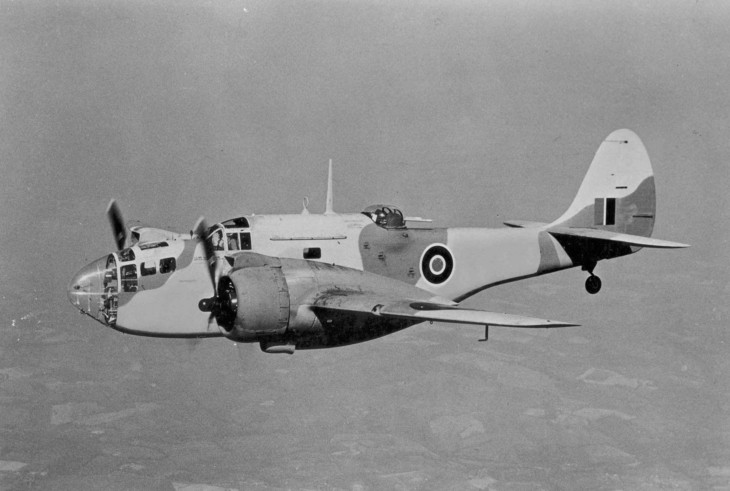
The Baltimore was used by both the United States. and the British during World War II, mainly for ground attacks, training, and commercial aviation, among others. It flew at a speed of 322 MPH and had a climb rate of 2,035 feet per minute.
This was a six-crew plane that also accommodated patrol duties, and more than 3,000 units of the plane were produced before it was retired.
32. Martin Maryland
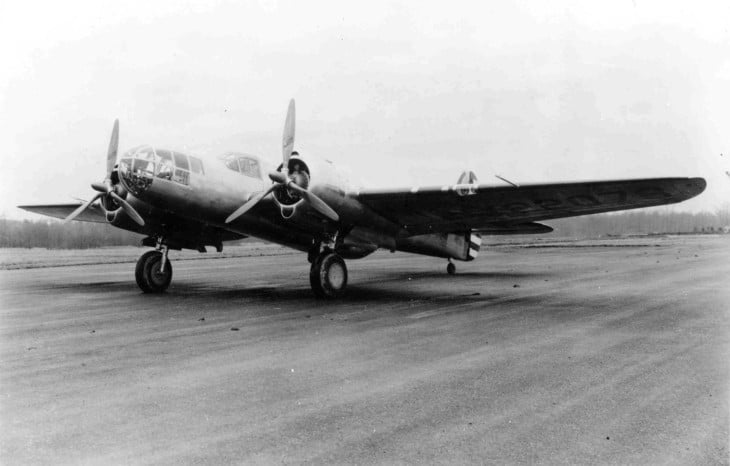
The Martin Maryland has been around since 1940 and was used for surveillance and ground attacks, but it is best known for its photographic reconnaissance capabilities. In fact, the plane had limited use during World War II, which is likely why only 450 units of it were ever made.
The Maryland flew at a speed of 316 MPH and had a climb rate of 2,400 feet per minute. It was a double-engine, three-seater plane.
Related Posts
